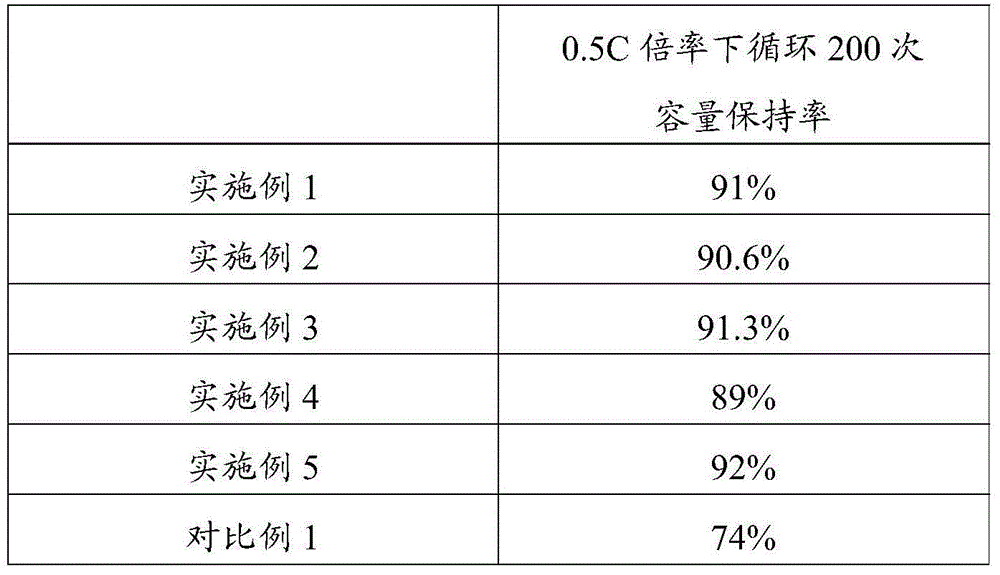Lithium ion battery cathode binder, cathode and battery
A lithium-ion battery and binder technology, applied in battery electrodes, adhesives, secondary batteries, etc., can solve the problems of poor cycle stability of lithium-ion batteries, weak adhesion of styrene-butadiene rubber, and binder failure. Good cycle stability, the effect of making up for weak adhesion and preventing shedding
- Summary
- Abstract
- Description
- Claims
- Application Information
AI Technical Summary
Problems solved by technology
Method used
Image
Examples
Embodiment 1
[0056] In the present embodiment, the percentage by weight of each component of the negative electrode material is (in terms of dry material weight):
[0057] Sodium alginate, 4.5%; styrene-butadiene rubber, 0.9%; conductive carbon black, 5%; silicon carbon negative electrode active material, 89.6%. Among them, the number average molecular weight of sodium alginate is about 500,000, and the weight ratio of sodium alginate to styrene-butadiene rubber is 5:1.
[0058] The lithium-ion battery prepared by using the above-mentioned negative electrode material was charged and discharged at a rate of 0.5C at 25°C, and the capacity retention rate was 91% after 200 cycles.
Embodiment 2
[0060] In the present embodiment, the percentage by weight of each component of the negative electrode material is (in terms of dry material weight):
[0061] Sodium alginate, 2%; potassium alginate, 2%; styrene-butadiene rubber, 2%; conductive carbon black, 9%; silicon carbon negative electrode active material, 85%. Among them, the number average molecular weight of sodium alginate and potassium alginate is about 1 million, and the weight ratio of sodium alginate to styrene-butadiene rubber is 2:1.
[0062] The lithium-ion battery prepared by using the above-mentioned negative electrode material was charged and discharged at a rate of 0.5C at 25°C, and the capacity retention rate was 90.6% after 200 cycles.
Embodiment 3
[0064] In the present embodiment, the percentage by weight of each component of the negative electrode material is (in terms of dry material weight):
[0065] Sodium alginate, 1.5%; styrene-butadiene rubber, 1.5%; conductive carbon black, 2%; silicon carbon negative electrode active material, 95%. Among them, the number average molecular weight of sodium alginate is about 50,000, and the weight ratio of sodium alginate to styrene-butadiene rubber is 1:1.
[0066] The lithium-ion battery prepared by using the above-mentioned negative electrode material was charged and discharged at a rate of 0.5C at 25°C, and the capacity retention rate was 91.3% after 200 cycles.
PUM
 Login to View More
Login to View More Abstract
Description
Claims
Application Information
 Login to View More
Login to View More - R&D Engineer
- R&D Manager
- IP Professional
- Industry Leading Data Capabilities
- Powerful AI technology
- Patent DNA Extraction
Browse by: Latest US Patents, China's latest patents, Technical Efficacy Thesaurus, Application Domain, Technology Topic, Popular Technical Reports.
© 2024 PatSnap. All rights reserved.Legal|Privacy policy|Modern Slavery Act Transparency Statement|Sitemap|About US| Contact US: help@patsnap.com








